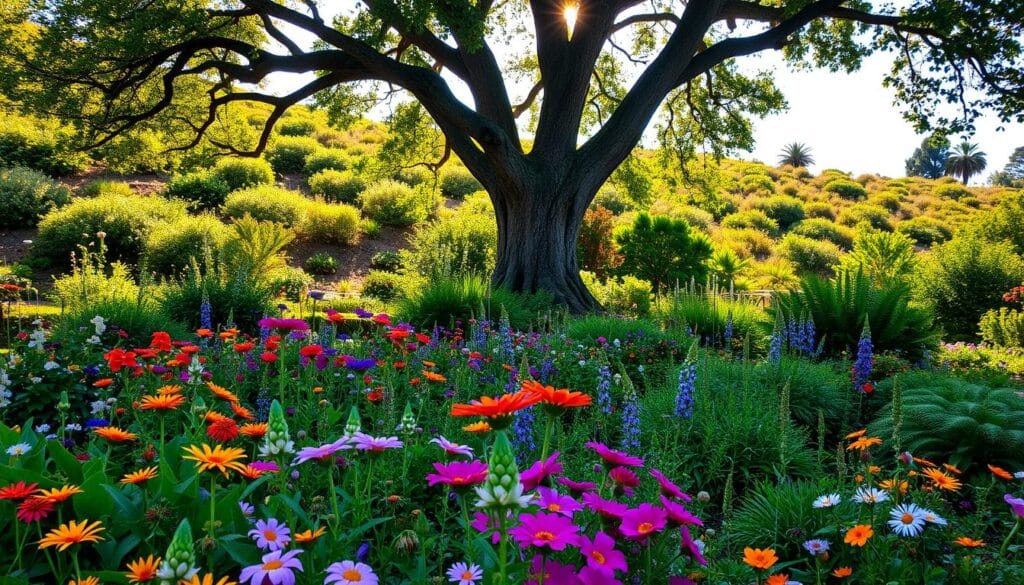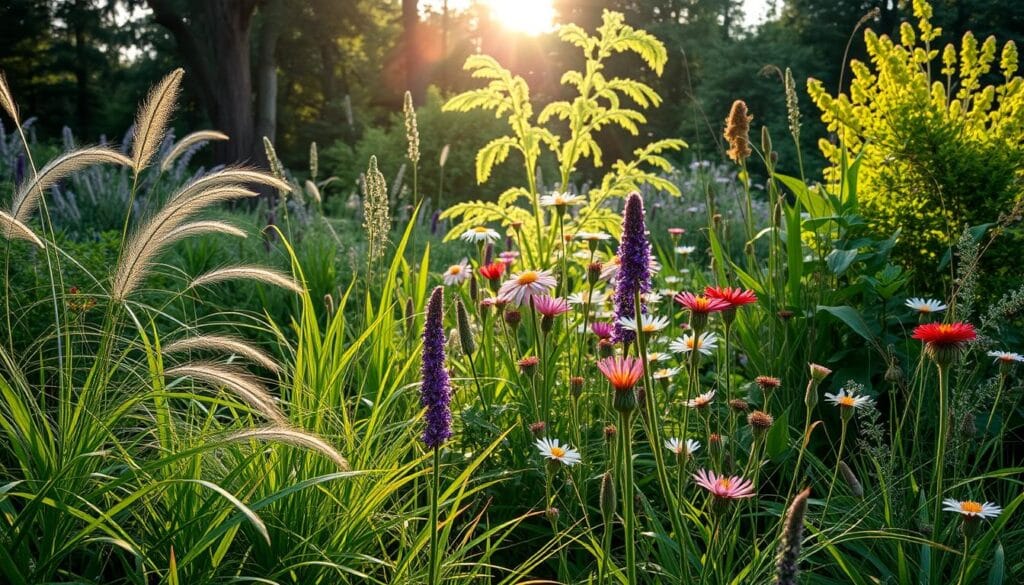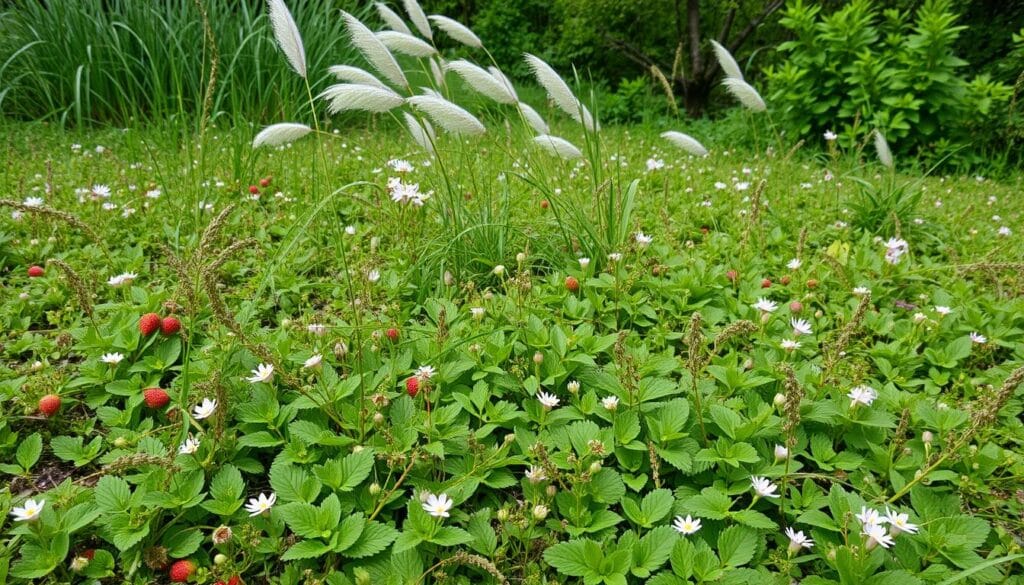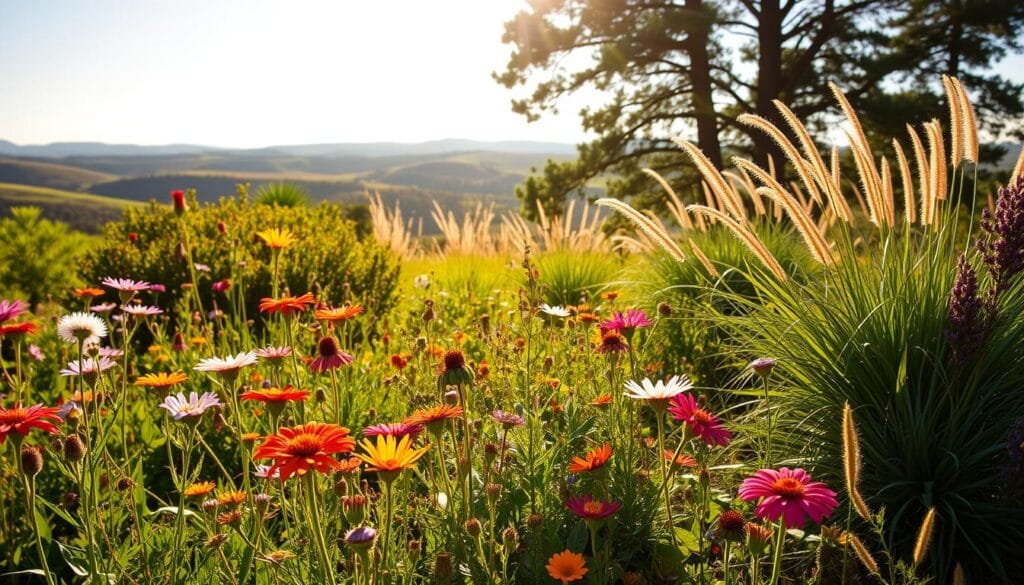Have you ever wondered why some gardens seem to thrive effortlessly, buzzing with life and beauty while needing less water, fertilizer, or fuss? The secret might just lie in the plants themselves. Native plants for sustainable garden design are more than just a trend they’re a powerful way to create an eco-friendly, low-maintenance space that supports local wildlife and withstands climate challenges.
In this guide, we’ll explore how choosing native plants can transform your outdoor space into a thriving, resilient haven. Whether you’re looking to conserve water, attract pollinators like bees and butterflies, or simply reduce garden chores, you’re in the right place. Let’s dig into how you can build a garden that’s not only beautiful but deeply beneficial to the environment and your peace of mind.
Creating a sustainable garden that thrives with minimal intervention is a rewarding endeavor. By choosing the right native plants, you can create a beautiful landscape that not only enhances your outdoor space but also supports local ecosystems and habitat.
Native plants have evolved over thousands of years to handle specific regional conditions, making them perfectly adapted to your local environment. This natural adaptation means they require fewer resources, such as water and fertilizers, to flourish.
Key Takeaways
- Discover how native plants form the foundation of sustainable gardening practices.
- Learn why native plants are uniquely suited to create low-maintenance gardens.
- Understand how sustainable gardens with native plants support local wildlife and enhance biodiversity.
- Gain insights into selecting the right plants for your regional conditions.
- Explore practical advice for establishing a thriving sustainable garden.
Why Native Plants Are Essential for Sustainable Gardens
Sustainable gardening starts with native plants, which have evolved over time to thrive in local conditions. These plants are not just aesthetically pleasing; they play a crucial role in maintaining the balance of local ecosystems.
Defining Native Plants and Their Ecological Role
Native plants are species that have naturally grown in a region without human intervention. They have developed complex relationships with local wildlife and environmental conditions, making them a vital part of the ecosystem.
The Sustainability Connection
Native plants directly contribute to sustainability by requiring fewer resources to thrive. They are adapted to the local region‘s soil types, rainfall patterns, and seasonal changes, reducing the need for fertilizers and pesticides.
Environmental Benefits at a Glance
The environmental benefits of native plants include improved habitat for wildlife, better stormwater management, and enhanced biodiversity. By incorporating native plants into your garden, you support local ecosystems and promote sustainability.
Key Benefits of Native Plants for Sustainable Gardens
Sustainable gardening begins with native plants, which provide a multitude of ecological advantages. By choosing plants that are naturally adapted to your local environment, you can create a garden that is not only beautiful but also beneficial for the local ecosystem.
Water Conservation and Low Maintenance
Native plants are drought-tolerant and require minimal water and maintenance, making them ideal for sustainable gardening. Their deep root systems also help prevent soil erosion.
Supporting Local Wildlife and Pollinators
Native plants attract wildlife such as bees, butterflies, and birds by providing food and habitats. This support for local wildlife is crucial for maintaining biodiversity.
Soil Health and Reduced Chemical Use
The deep root systems of native plants improve soil health by preventing erosion and increasing organic matter. This reduces the need for chemical fertilizers and pesticides.
Climate Resilience and Carbon Sequestration
Native plants contribute to climate resilience by sequestering carbon and adapting to changing weather patterns. This makes them a valuable asset in the fight against climate change.
| Benefit | Description |
|---|---|
| Water Conservation | Native plants require less water due to their drought tolerance. |
| Wildlife Support | Native plants provide food and habitats for local wildlife. |
| Soil Health | Deep root systems improve soil health and prevent erosion. |

Selecting Native Plants for Your Sustainable Garden
Creating a sustainable garden starts with choosing native plants that will flourish in your local environment. To make informed decisions, you need to understand your regional ecosystem and the conditions that support native plant growth.
Understanding Your Regional Ecosystem
Identifying your specific region‘s ecosystem is crucial. This knowledge helps you understand which native plant communities naturally thrive in your area, providing a foundation for selecting the right plants for your sustainable garden.
Assessing Your Garden’s Conditions
Assess your garden’s unique conditions, including soil type, drainage patterns, sun exposure, and microclimates. This assessment will influence which native plants will thrive in different areas of your yard.

Matching Plants to Challenging Environments
Discover how to match plants to challenging environments by understanding their adaptations to specific conditions like drought, poor soil, excessive moisture, or deep shade. This ensures you select native plant species that are not just regionally appropriate but also adapted to tough conditions.
Finding Reliable Native Plant Sources
Learn practical strategies for finding reliable sources of native plants, including specialized nurseries, native plant sales, seed exchanges, and responsible collection methods. This helps you select species with the right growth habits and ecological functions.
| Condition | Native Plant Species | Benefits |
|---|---|---|
| Dry and Sunny | Black-eyed Susan, Butterfly Weed | Drought tolerant, attracts pollinators |
| Wet and Shady | Ferns, Wild Ginger | Thrives in moist conditions, stabilizes soil |
| Compacted Soil | Switchgrass, Little Bluestem | Tolerates compacted soil, improves soil health |
Top Native Plants for Different Garden Challenges
The key to a thriving sustainable garden lies in the selection of appropriate native plants. By choosing the right plants for your garden’s specific conditions, you can create a resilient and biodiverse ecosystem.
Native Trees and Shrubs for Structure
Native trees and shrubs provide the structural backbone for sustainable gardens, offering bird habitat, shade, and seasonal interest. Examples include oak trees and dogwood shrubs, which are not only beautiful but also support local wildlife.
Flowering Natives for Pollinators
Flowering native plants attract and support essential pollinators throughout the growing season. Plants like coneflowers and black-eyed susans are perfect for creating a pollinator-friendly garden.
Native Ground Covers for Problem Areas
Native ground covers are effective in solving common landscape problems like erosion, poor soil, and weed suppression. They require minimal maintenance once established and help in saving water by preventing evaporation.

Adaptable Natives for Extreme Conditions
Some native plants thrive in extreme conditions such as drought, wet areas, deep shade, or poor soil. By selecting these adaptable natives, you can transform challenging spots in your yard into ecological assets.
By combining different types of native plants, you can create layered habitats that maximize biodiversity and ecological function in your garden.
Essential Tools and Resources for Your Native Plant Garden
Now that you have a solid plan and know how to get started, let’s talk about the tools and resources that will make your gardening journey smoother and more enjoyable. Having the right gear and information at your fingertips is like having a trusted gardening buddy by your side.
Must-Have Gardening Tools
- Gloves: Protect your hands from thorns, dirt, and insects.
- Hand Trowel: Perfect for planting seeds and small native plants.
- Pruning Shears: Keep your plants tidy by trimming dead or overgrown branches.
- Garden Fork or Spade: Helps with soil preparation and turning compost.
- Watering Can or Hose with a Gentle Spray: Essential for deep, controlled watering.
These basic tools cover most tasks and keep your native garden healthy and thriving.
Helpful Resources to Learn and Grow
- Local Native Plant Societies: They often offer workshops, plant sales, and advice tailored to your area.
- Extension Services: Government-supported programs provide research-based gardening tips.
- Books and Guides: Titles focused on native plants and sustainable gardening can be invaluable.
- Online Communities: Forums and social media groups connect you with fellow gardeners to share experiences and solutions.
Using Technology to Your Advantage
- Plant Identification Apps: Quickly identify unknown plants or confirm native species.
- Garden Planning Tools: Apps or websites can help you design your space and plan planting schedules.
- Weather Apps: Track local weather to adjust watering and protect plants from extreme conditions.
Eco-Friendly Gardening Supplies
- Organic Fertilizers and Mulches: Support soil health naturally without harmful chemicals.
- Natural Pest Controls: Beneficial insects, neem oil, or homemade sprays protect your garden without toxins.
Tips for Staying Organized and Motivated
- Keep a Gardening Journal: Track planting dates, growth progress, and any challenges.
- Set Small, Achievable Goals: Celebrate each milestone to stay motivated.
- Schedule Regular Garden Visits: Consistency helps you catch issues early and enjoy your progress.
Equipping yourself with these tools and resources lays a strong foundation for success. Plus, learning along the way makes gardening a rewarding and ongoing adventure. Up next, we’ll explore how to nurture your native plants through seasonal care to keep your sustainable garden flourishing year-round!
Troubleshooting Common Issues in Native Plant Gardens
Even the most carefully planned native plant garden can face challenges — but don’t worry! With a little know-how, you can quickly identify and resolve common problems to keep your garden healthy and thriving. Think of this section as your gardening first-aid kit, ready to help you tackle issues like a pro.
Dealing with Pests Naturally
Native plants often attract beneficial insects, but sometimes pests can sneak in. Here’s how to manage them without harming your ecosystem:
- Identify the Pest: Look for signs like holes in leaves, sticky residue, or unusual spots.
- Use Natural Predators: Ladybugs and lacewings are great allies against aphids and other pests.
- Try Homemade Sprays: A mix of water, mild soap, and neem oil can control many common bugs.
- Avoid Chemical Pesticides: These can harm beneficial insects and disrupt your garden’s balance.
Addressing Plant Diseases
Fungal infections or mold can appear, especially in humid conditions. Keep an eye out for:
- Discolored or Wilting Leaves
- Powdery or Downy Mildew
- Spots or Blotches on Leaves
Tips to prevent and manage diseases:
- Ensure Good Air Circulation: Space plants adequately and prune crowded areas.
- Water at the Base: Avoid wetting foliage to reduce fungal growth.
- Remove Affected Parts: Dispose of diseased leaves promptly to prevent spread.
- Rotate Plants: Changing planting locations each season can reduce disease buildup.
Combatting Weeds Effectively
Weeds compete with your native plants for nutrients and water. Here’s how to keep them in check:
- Mulch Regularly: A thick layer of organic mulch suppresses weed growth and retains moisture.
- Hand Pull When Young: Remove weeds before they set seeds.
- Use Ground Covers: Fast-growing native ground covers help shade out weeds naturally.
Handling Environmental Stress
Native plants are resilient but can struggle with:
- Drought: Deep watering once or twice a week encourages strong roots.
- Too Much Sun: Some natives prefer partial shade; know your plants’ needs.
- Extreme Weather: Protect young plants with temporary shade cloths or windbreaks.
Quick Tips for Ongoing Garden Health
- Regularly Inspect Your Garden: Early detection is key.
- Maintain Soil Health: Healthy soil strengthens plant defenses.
- Keep Learning: Every season offers new lessons—embrace them!
By staying attentive and proactive, you can overcome most garden challenges gracefully. Your native plants will reward your care with vibrant growth and a flourishing ecosystem. Next, let’s dive into the joy of harvesting and enjoying the fruits of your sustainable garden!
Enjoying and Sustaining Your Native Plant Garden
Now that your native plant garden is thriving, it’s time to truly enjoy its beauty and benefits — and learn how to keep it flourishing year after year. Caring for native plants sustainably means more than just planting and watering; it’s about creating a living ecosystem that supports wildlife, conserves resources, and brings you joy.
Celebrate Your Garden’s Beauty
- Take Time to Observe: Watch how butterflies, bees, and birds interact with your plants.
- Photograph Seasonal Changes: Capture blooms, changing foliage, and wildlife visits for lasting memories.
- Create Relaxing Spaces: Add benches or pathways to immerse yourself in your garden’s natural charm.
Sustainable Garden Maintenance Tips
Maintaining your garden sustainably ensures it stays healthy without extra strain on the environment:
- Use Mulch to Retain Moisture: Mulching helps conserve water and suppress weeds.
- Compost Garden Waste: Turn clippings and fallen leaves into rich compost to nourish your soil.
- Practice Minimal Watering: Rely on native plants’ drought tolerance; water deeply but infrequently.
- Avoid Synthetic Fertilizers: Choose organic amendments to protect soil microbes and beneficial insects.
Support Local Wildlife
Your native garden can become a sanctuary for local species:
- Provide Shelter: Leave some leaf litter or build small brush piles for insects and amphibians.
- Plant in Layers: Include ground covers, shrubs, and trees to offer diverse habitats.
- Avoid Pesticides: Keep your garden safe for pollinators and other helpful creatures.
Plan for Future Growth
- Rotate Plants: Introduce new native species over time to diversify your garden.
- Collect Seeds: Save seeds from your plants to grow future generations.
- Share with Friends: Swap native plants or seeds to expand native gardening in your community.
Final Thought: Your Garden, Your Legacy
By nurturing native plants, you’re contributing to a healthier planet while creating a personal oasis. Your garden becomes a vibrant, sustainable space that benefits you, your neighbors, and local wildlife alike.
Ready to keep growing? Let’s explore some expert tips on expanding your sustainable gardening journey!
Conclusion: Transform Your Yard into a Sustainable Native Habitat
By embracing sustainable gardening practices with native plants, you’re contributing to a healthier planet. This approach not only beautifies your landscape but also supports local wildlife and conserves water. You’ll gain confidence in transforming your yard into a thriving habitat that requires minimal maintenance.
The key principles outlined in this guide empower you to make a positive impact through sustainable landscape design. By choosing native plants, you’re supporting biodiversity and improving soil health. As you share your knowledge with others, you’ll create a ripple effect that can transform neighborhoods into more wildlife-friendly places.
Frequently Asked Questions
What are the benefits of using native plants in my garden?
Using native plants in your garden can help conserve water, reduce maintenance, and support local wildlife and pollinators. They also promote soil health and reduce the need for chemical use.
How do I choose the right native plants for my garden?
To choose the right native plants, you need to understand your regional ecosystem and assess your garden’s conditions, including climate, soil type, and sunlight. This will help you select plants that thrive in your environment.
Can native plants help mitigate the effects of climate change?
Yes, native plants can help mitigate the effects of climate change by promoting carbon sequestration and providing climate resilience. They can also help reduce the need for irrigation and other maintenance activities that contribute to greenhouse gas emissions.
How do native plants support local wildlife and pollinators?
Native plants provide food and habitat for local wildlife and pollinators, such as bees, butterflies, and birds. By incorporating native plants into your garden, you can create a welcoming environment for these species.
Are native plants more difficult to care for than non-native plants?
In fact, native plants are often low maintenance and require less care than non-native plants. They are adapted to local conditions and can thrive with minimal watering and fertilization.
Where can I find native plants for my garden?
You can find native plant sources at local nurseries, gardening stores, and online retailers that specialize in native plants. Make sure to research the seller and check the plant’s origin to ensure it is suitable for your region.
source

